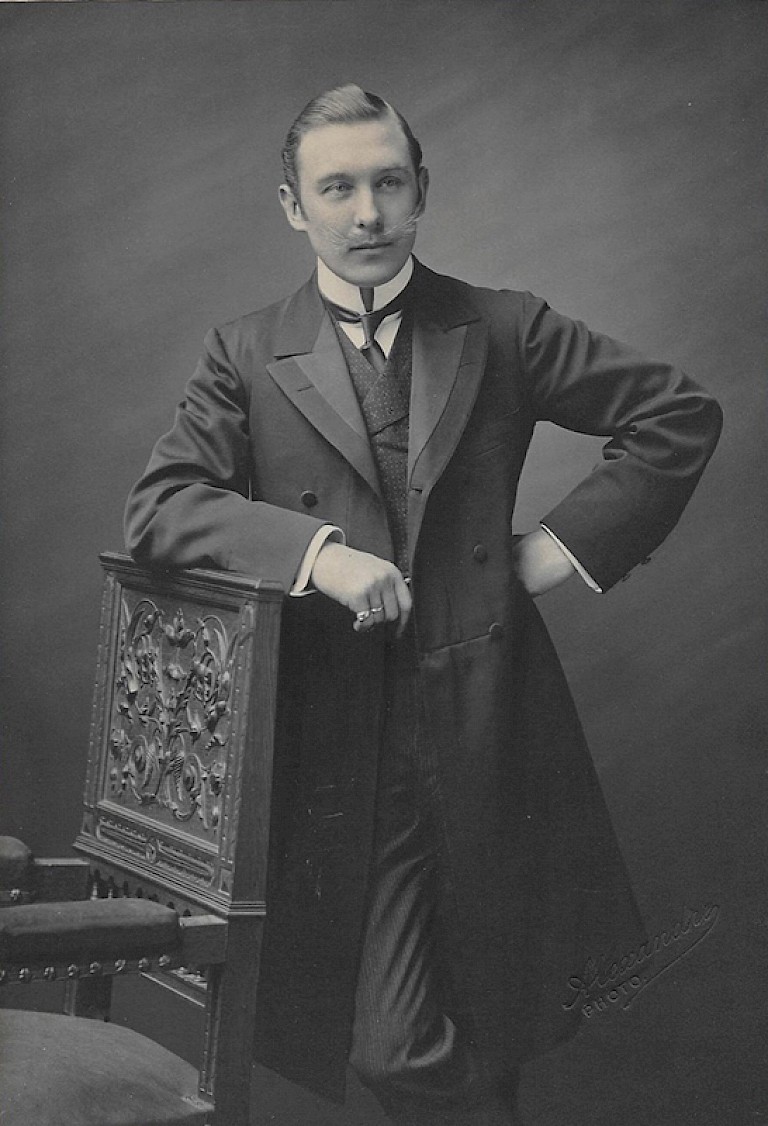History of the owners
The first lord of Grand Bigard, Almaric de Bigard, lived here around 1110. Since then, there have been 40 different owners, including several well-known names in Belgian history. Amongst them there is Guillaume Rongman, Lord of Bigard, appointed "Captain of the city of Brussels" in 1422 by Philip the Good. He restored peace to town and was granted rights to the Brabant Mint, located on the site of the current Place de la Monnaie. Once his task had been fulfilled he returned the keys to the City in 1424.
The fourteenth Lord of Bigard, Guillaume Estor, had also a distinguished military career. His life was a long serie of battles and wars. He held office by a patent letter of Charles the Bold, Duke of Burgundy, count of Charolais, and was wounded by a serpentine bullet at the siege of Amiens in 1471. He became councilor of the duke of Brabant, then in 1471 councilor of the city Brussels. Eventually from 1477 to 1480, the year where Brussels submitted to the Emperor Maximilian, Guillaume became Amtmann the city.
On the 6th of January 1548 his grandson Jean Estor and his mother were executed for heresy. Their possessions were confiscated and Emperor Charles V had sold the domain of Bigard to Gaspard Schetz, Lord of Grobbendonck, by letters patent dated 14th february 1549, for 17.800 pounds. The Lord of Grobbendonck married Catherine d'Ursel, a descendant of Rongman and Catherine de Bigard.
Next came Laurent Longin, Lord of Lembecq and Treasurer of Charles V.
Then in 1630 Count Clarisse of Antwerp and finally, the first of a long and illustrious line, Count Philippe de Boisschot, Chancellor of Brabant. He died in 1649 and was buried in Notre Dame du Sablon. His great-granddaughter Hélène de Boisschot, married Charles Ferdinand, count of Könisegg-Rothenfels, regent of the Low Countries.
On the occasion of their wedding empress Maria-Theresia bestowed the title of Marquess on the owners of Grand Bigard. Charles Ferdinand was twice governor of Belgium, in 1716 and in 1743. He was awarded by the Order and received the Golden Fleece of Charles of Lorraine in 1744. His daughter married the count of Zierotin, chamberlord of the emperor of Austria. In 1797 his grand-daughter, Maria van Zierotin, became countness of Thurn and Taxis.
But it was Count Ferdinand de Boisschot who left most traces of his stewardship of the castle. He enlarged the existing building and added the chapel in 1640. You can still see his memorial plaque, dated 1649 and the one of Charles Ferdinand de Königsegg-Rothenfels, count of the Holy Roman Empire, Knight of the Golden Fleece, in 1759. After Charles Ferdinand, the property was gradually split up. In 1902, Raymond Pelgrims de Bigard found himself faced with sadly dilapidated buildings. The entrance was blocked by various farmsteads, the moat was filled with earth. After thirty years of hard work and from these remnants of a glorious past, Raymond Pelgrims de Bigard managed to restore one of Belgium's most prestigious castles. In 2004 the family decided to open the park to the public in April, by organizing the largest flower show in Belgium. Since then this event has become a must and helps to maintain this exceptional piece of our heritage.
